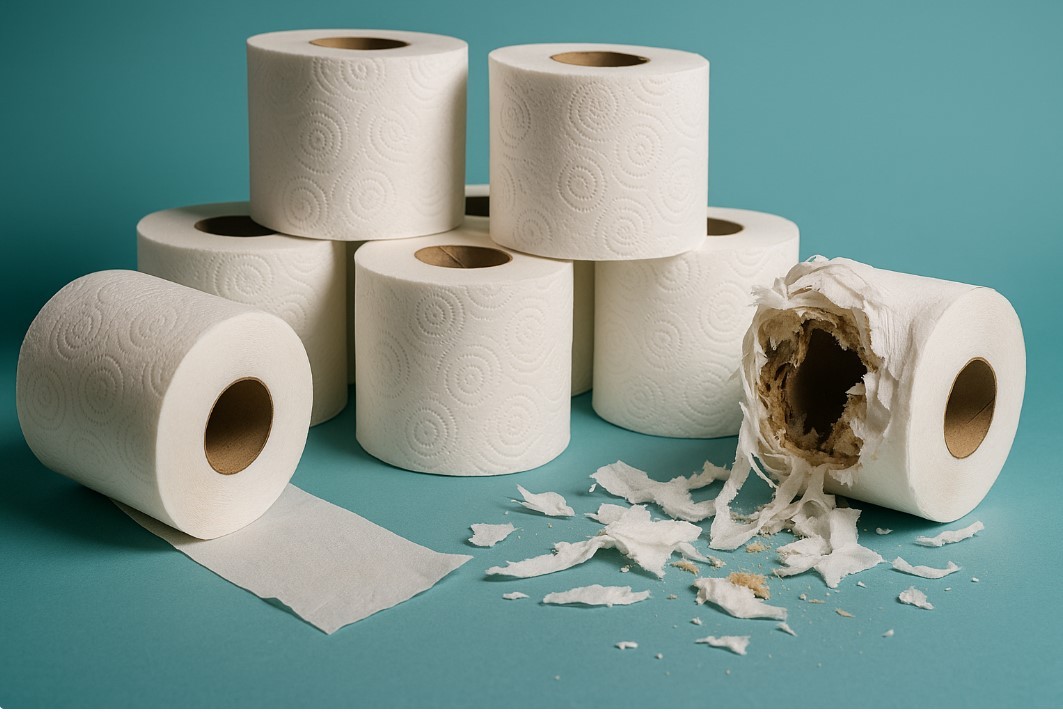10 Most Popular Toilet Paper Brands in the U.S
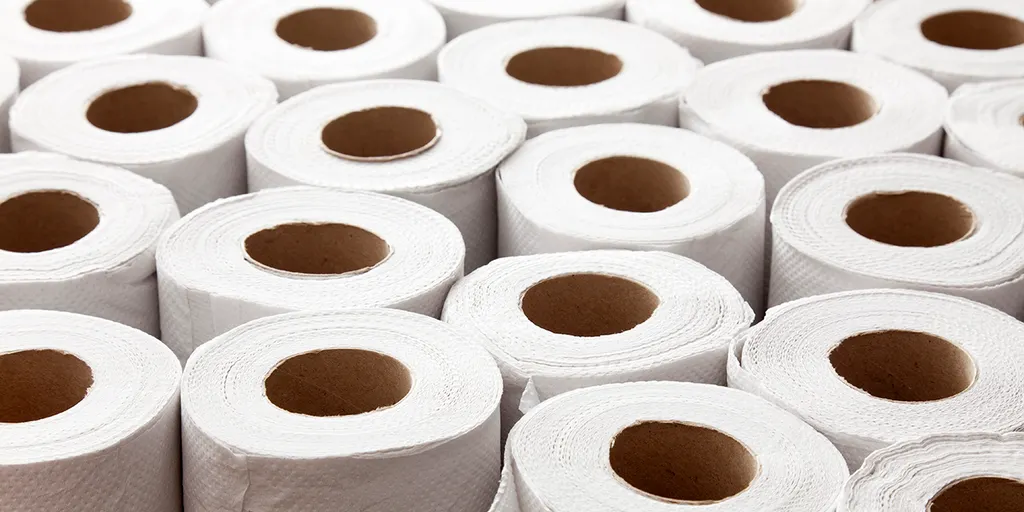 |
| Where Is Toilet Paper Made In The US . Photo: Fox Business |
In comparison to the average global per capita usage of just 5 kilograms per year, North American consumers used an average of 25 kilograms of toilet paper per person, which is the equivalent of 144 Charmin Mega-Rolls.
Comparatively speaking, toilet paper consumption in Western Europe and Japan was only around 15 kilograms per person, whereas it is practically nonexistent in Africa, the Middle East, and many regions of Asia.
The vast majority of toilet paper used in America is made domestically.
Just 7.5% of American toilet paper is imported, according to market research company IndexBox. Despite this, the United States continues to be the world's top importer of toilet paper, making up 9.4% of all imports, according to the Observatory of Economic Complexity at the MIT Media Lab (OEC). China is currently the biggest exporter in the world, followed by Germany, Japan, Poland, and Italy. However, China doesn't export a lot of toilet paper to the United States; instead, 80% of Chinese exports go to other regions of Asia, Africa, and Europe.
The majority of the toilet paper that the United States does import is from Mexico and Canada.
Where is toilet paper made in the United States?
In the United States, three companies—Proctor & Gamble, Kimberly Clark, and Georgia-Pacific—produce the majority of toilet paper, also known as bathroom tissue or toilet tissue. These brands include Angel Soft and Quilted Northern. 80% of all toilet paper on the market is sold by these companies. After these three businesses, private label toilet paper producers are the largest supplier of this bathroom necessity, which reflects the rise in popularity of private label goods in recent years.
Based in Cincinnati, Ohio, Proctor & Gamble also produces napkins and paper towels, facial tissues, cleaning and sanitation products for both industrial and domestic use, along with toilet paper under the registered trademarks Angel Soft and Quilted Northern. The business provides services to the janitorial, hospitality, healthcare, restaurant, and retail sectors.
In Irving, Texas, Kimberly Clark Corp. sells folded toilet paper, standard and jumbo rolls, as well as consumer-grade varieties. Additionally, the company sells shop towels, paper towels, napkins, facial tissues, air fresheners, disinfectants, personal protective equipment, skincare products, and building supplies.
Georgia-Pacific, which has its headquarters in Atlanta, Georgia, sells paper towels, facial tissues, dispensers, hand dryers, and other bathroom supplies in addition to both consumer and commercial bathroom tissue. The company also manufactures packaging materials, paper towels, wipes, and napkins for use in kitchens and on factory floors.
Solaris Paper has acquired Oasis Brands in Anaheim, California. Consumer and commercial toilet paper, as well as private label options, are all available from Solaris Paper in jumbo and standard rolls. Additionally, the business sells tissues and paper towels.
Top 10 Most Popular Brands of Toilet Paper in the US
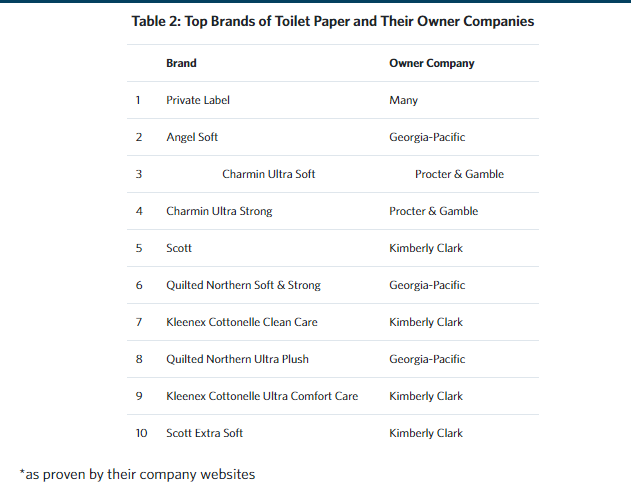 |
| Photo: Thomasnet |
10. Scott Extra Soft
With operations in 22 nations, The Scott Paper Company was the largest producer and marketer of sanitary tissue products worldwide. Several well-known brand names, including Scott Tissue, Cottonelle, Baby Fresh, Scottex, and Viva, were used to market the company's goods. In 1994, the company's combined sales of its consumer and business products came to about $3.6 billion.
The Kimberly-Clark Corporation bought the business in 1995.
E. Irvin and Clarence Scott, brothers, founded Scott Paper in 1879 in Philadelphia. Scott Paper is frequently cited as the innovator of toilet paper sold on a roll. They started selling paper tissues and paper towels in the 1930s.
The first of Scott's many acquisitions was a pulp mill in Nova Scotia in 1927. In 1936, it merged with The Mead Corporation to form Brunswick Pulp & Paper Company, which supplied both Mead and Scott using its pulp mill in Georgia. In the 1950s, Scott merged with Southview Pulp Company and Hollingsworth & Whitney Company, which provided timberlands and mills in Washington, Alabama, and Maine. The company then purchased mills in New York and Wisconsin.
Scott, whose advertising strategies can be credited to their founder E. Irvin Scott's son Arthur, was successful throughout the 20th century. In the 1930s, Scott's hard-sell magazine advertisements emphasized cautions that using rough toilet paper could cause uncomfortable rectal issues.
Scott sold its printing and publishing papers division, which included its wholly owned subsidiary, S.D. Warren, in December 1994 for roughly $1.6 billion.
9. Kleenex Cottonelle Ultra Comfort Care
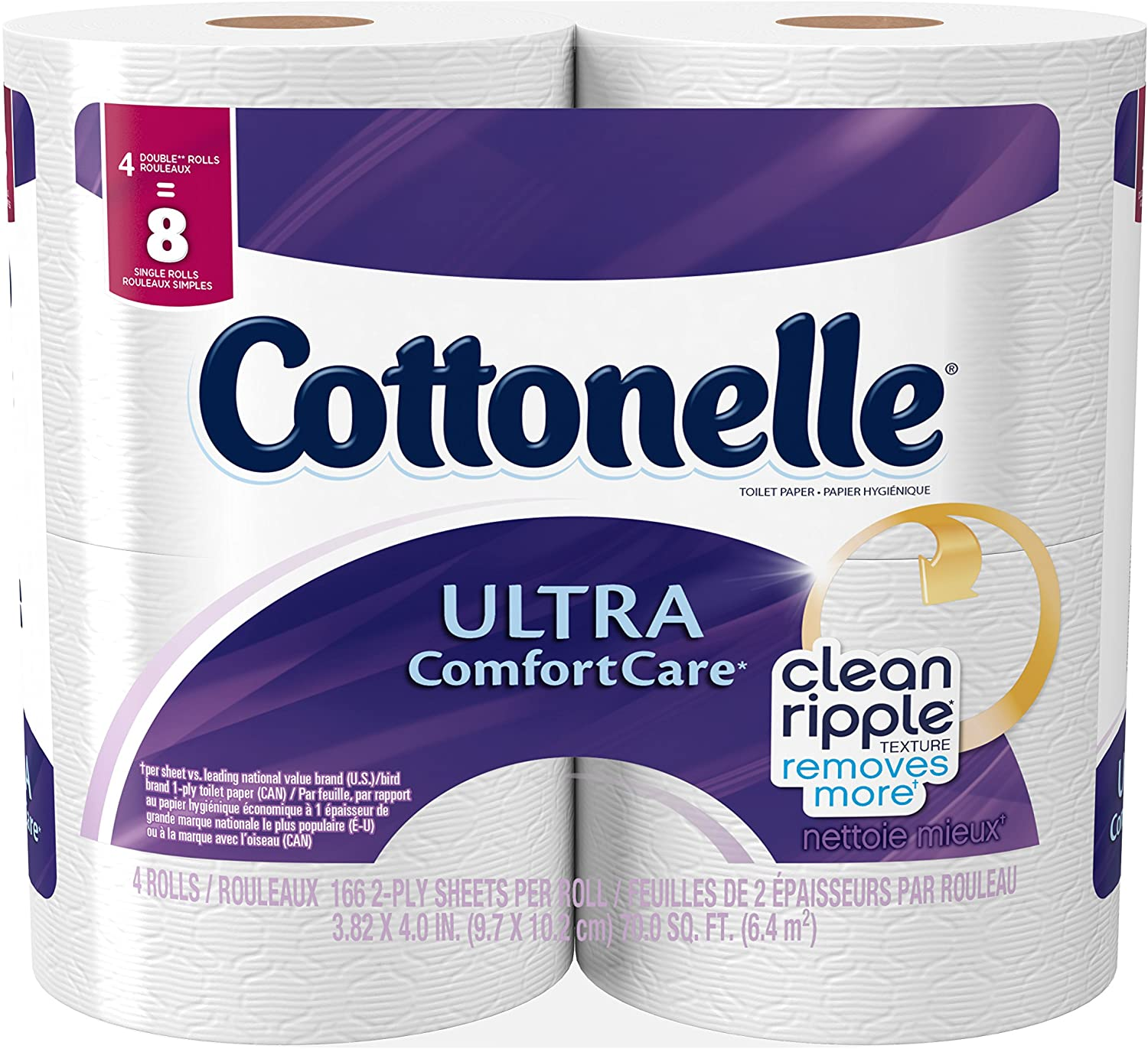 |
| Kleenex Cottonelle Ultra Comfort Care |
The name Kleenex refers to a range of paper-based goods, including tampons, paper towels, facial tissue, bathroom tissue, and diapers. The name Kleenex is a registered trademark of Kimberly-Clark and is frequently used informally as a genericized trademark for facial tissue in the United States. More than 170 countries buy Kleenex products, which are produced in 30 countries. Cottonelle, Huggies, and VIVA are examples of Kleenex brand names.
The First World War saw the beginning of Kleenex. It created a type of crepe paper used as a gas mask filter. It was modified as a consumer good called Kotex brand to aid women with their periods in the early 1920s. The words "cotton" and "texture" were combined to create the Kotex trademark. This name was selected because it "met [their] requirements for being short, easy to say, easy to remember, and easy to explain," according to the company itself, which has confirmed this. The "Kleen" part of the name Kleenex denotes its cleansing function because it was chosen as the name for a line of cold cream remover in 1924. To indicate that Kleenex was a member of the same product family as Kotex, a "ex" was added. In 1924, the first facial tissue was made available in Western culture and was initially marketed as a way to remove cold cream (it had already been in use in Japan for centuries; see History of facial tissue for details). It served as a disposable alternative to cotton wool or face towels. The first Kleenex tissue commercial, which featured "the new secret of keeping a pretty skin as used by famous movie stars," appeared in magazines in 1925. A few years after Kleenex was first produced, the company's chief researcher urged the head of advertising to consider marketing the tissue for hay fever and colds. Although she rejected the suggestion, the administrator did reserve a small amount of ad space to mention using Kleenex tissue as a handkerchief. Don't Carry a Cold in Your Pocket was the catchphrase used to promote Kleenex as it began to replace disposable handkerchiefs in the 1930s. To increase brand awareness, Kleenex started licensing the Little Lulu cartoon character in 1943.
8. Quilted Northern Ultra Plush
One of the biggest producers and suppliers of tissue, pulp, paper, toilet and paper towel dispensers, packaging, building products, and related chemicals worldwide is the American pulp and paper company Georgia-Pacific LLC, headquartered in Atlanta, Georgia. At more than 180 locations across North America, South America, and Europe as of the fall of 2019, the company employed more than 35,000 people. It is a Koch Industries subsidiary that is independently run and managed.
On September 22, 1927, Owen Robertson Cheatham established Georgia-Pacific as the Georgia Hardwood Lumber Co. in Augusta, Georgia. It grew over time, gaining sawmills and plywood factories. In 1947, the business bought its first West Coast location, and in 1948, it changed its name to Georgia-Pacific Plywood & Lumber Company. The business changed its name to Georgia-Pacific Corporation in 1956. The company built a kraft pulp and linerboard mill in Toledo, Oregon, and started operating in the pulp and paper industry in 1957. Throughout the following years, the business made a number of acquisitions, including those of US Plywood in 1987, Great Northern Nekoosa in 1990, and the Fort James Corporation in 2000. The Fort Howard Corporation, the James River Corporation, and Crown-Zellerbach were among the businesses that were merged to form the Fort James Corporation. Georgia-Pacific successfully sold four uncoated paper mills, along with the businesses and assets that went along with them, to the Canadian paper manufacturer Domtar in August 2001 for US$1.65 billion.
On November 13, 2005, it was revealed that Koch Industries would buy Georgia-Pacific. Koch Industries completed its $21 billion purchase of Georgia-Pacific on December 23, 2005. Shareholders of Georgia-Pacific surrendered their shares for about $48 per share and the company was delisted from the NYSE (it had traded under the symbol GP). At first, Koch was only interested in the GP Building Products Division, but Pete Correll, CEO and President of GP, refused to split the business up. Koch quickly came to the conclusion that the highly lucrative NA Consumer Products Business was a gold mine. Then, for the next six years, Koch Industries concentrated on selling the European business, which was ultimately made possible by a significant business turnaround of the UK business. With a condition from the European Competition Commission that the UK & Ireland Consumer Products business had to be separated and sold off, Koch sold the European business to SCA (now Essity) in 2013.
The corporate headquarters of the company are still located in Atlanta's Georgia-Pacific Tower. In 1959, the Crown Zellerbach Building was erected in San Francisco to serve as the company's main office.
The oriented strand board ("OSB") facility at Englehart, Ontario, and the related facility at Earlton, Ontario, as well as Grant Forest Products' OSB facilities at Clarendon and Allendale, South Carolina, were all acquired by Georgia-Pacific for about $400 million on January 11, 2010. Following Canadian regulatory review and US court approval under the Hart-Scott-Rodino merger review process, the deal was finalized in July 2013.
Georgia-Pacific announced on June 19, 2014, that it would buy SPG Holdings. A two-week labor strike took place in 2018 at Georgia-facilities Pacific's in Taylorsville, Mississippi.
7. Kleenex Cottonelle Clean Care
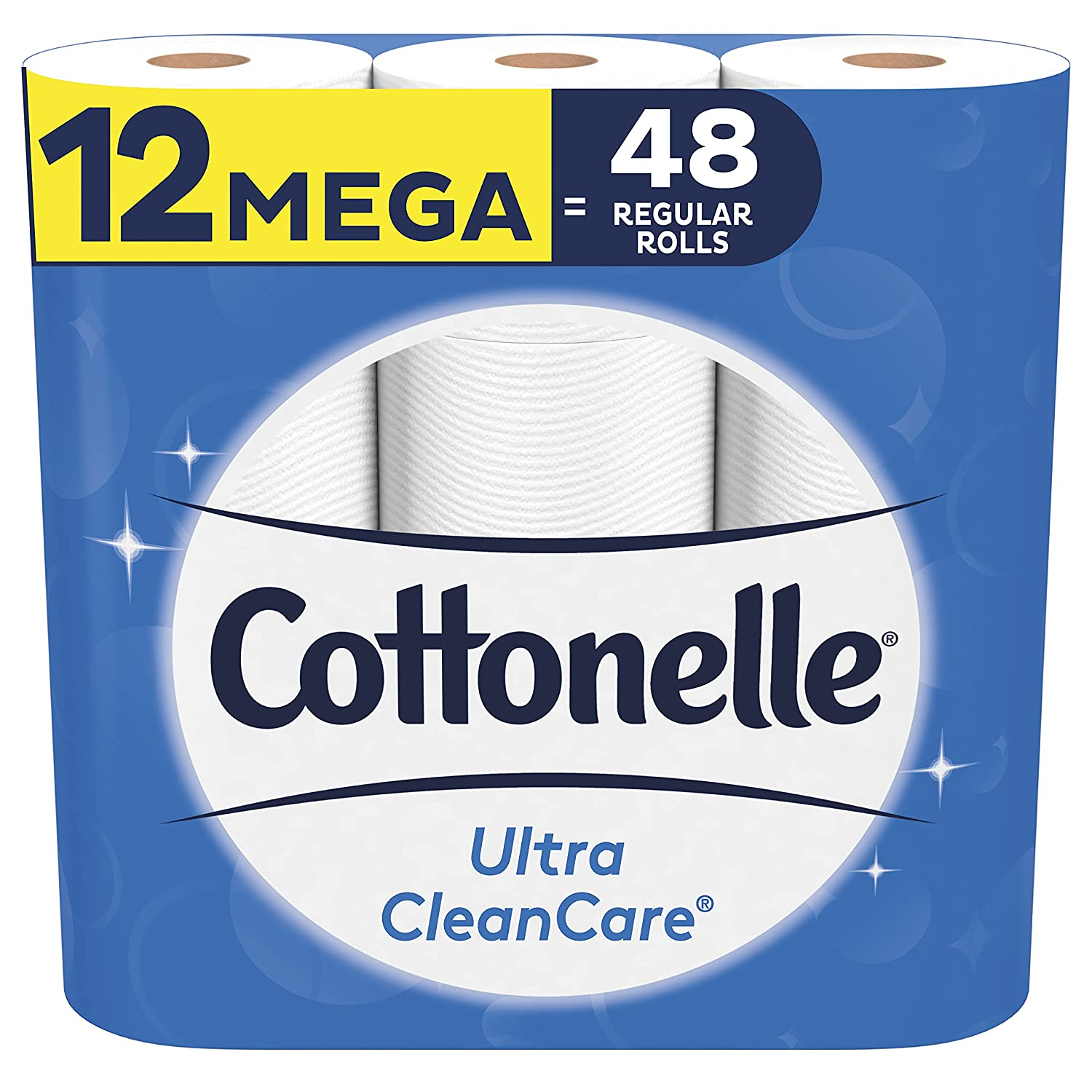 |
| Kleenex Cottonelle Clean Care |
Compared to the top national value brand, Cottonelle Ultra CleanCare Active Toilet Paper is 2x more absorbent, 3x stronger, and 3x thicker. For a confident clean, CleanCare bath tissue is specially created with a soft, Active CleaningRipples Texture that removes more at once per sheet. 24 Family Mega Rolls, each with 388 sheets, are included in this pack of CleanCare Active toilet paper. CleanCare toilet paper is biodegradable, clog-safe, septic-safe, and sewer-safe because it is made with water and renewable plant-based fibers. Strong, one-layer bath tissue made by Cottonelle called Ultra CleanCare Active has no harsh chemicals. Combine with Cottonelle Flushable Wipes for a Refreshing Clean that are 100% flushable and hypoallergenic. The forests from which Cottonelle toilet paper is derived are sustainably managed. Purchase Cottonelle CleanCare toilet paper in bulk to save money and stock up.
The name Kleenex refers to a range of paper-based goods, including tampons, paper towels, facial tissue, bathroom tissue, and diapers. The name Kleenex is a registered trademark of Kimberly-Clark and is frequently used informally as a genericized trademark for facial tissue in the United States. More than 170 countries buy Kleenex products, which are produced in 30 countries. Cottonelle, Huggies, and VIVA are examples of Kleenex brand names.
6. Quilted Northern Soft & Strong
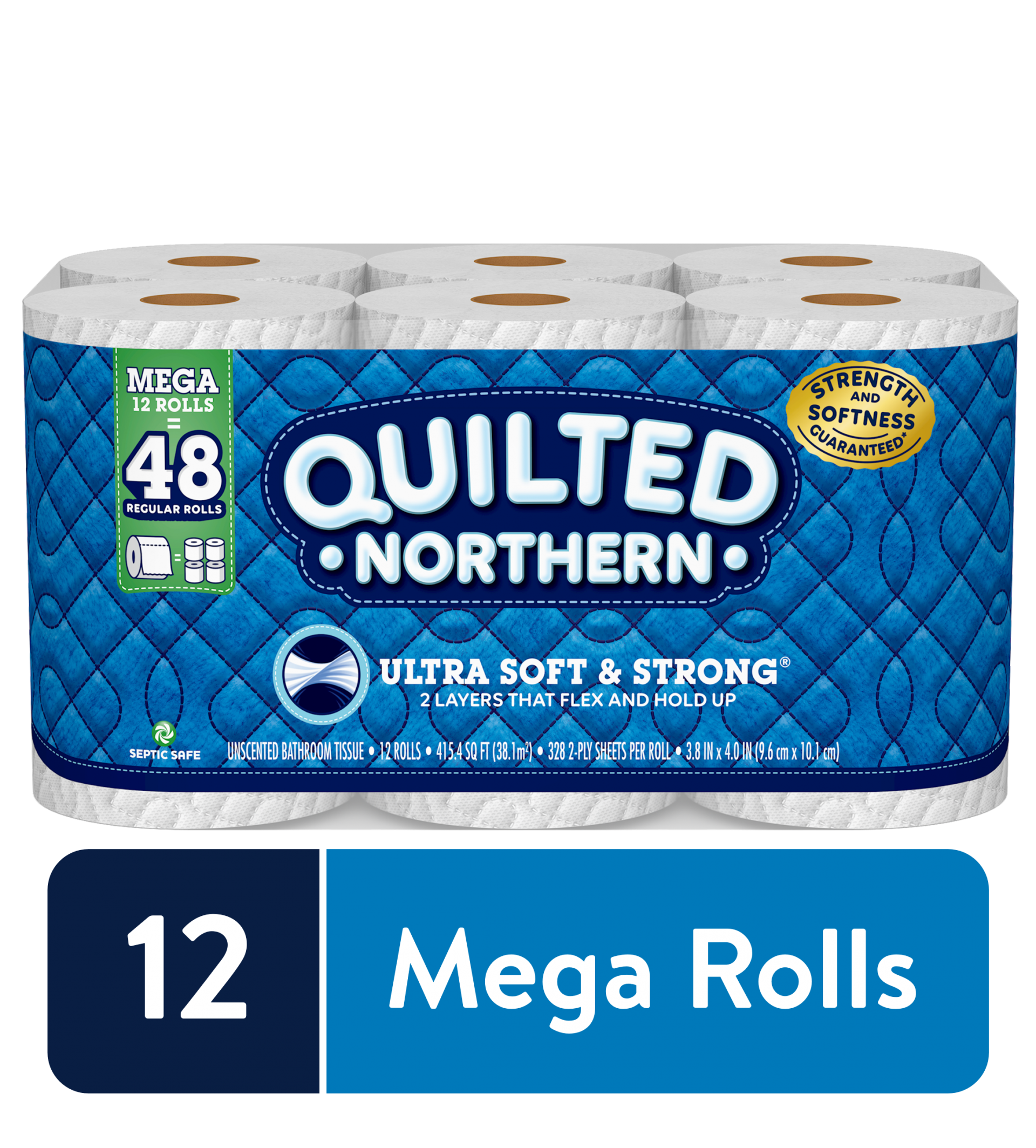 |
| Quilted Northern Soft & Strong |
For a comfortable, dependable clean, use Quilted Northern Ultra Soft & Strong Toilet Paper, which is soft, strong, and sustainably made. When wet, each Supreme Roll's 340 2-ply sheets are 4X stronger & more durable than those from the top value brand. For every tree used, three trees are planted—one through our suppliers and two more thanks to our collaboration with the Arbor Day Foundation! Utilize energy-efficient manufacturing to dry sheets with 30% less energy and 30% more water per sheet than other national Ultra 2-ply brands. Each pack of Quilted Northern Ultra Soft & Strong toilet paper comes with 24 Supreme Rolls.
Georgia-Pacific employs a variety of brand names.
Toilet paper and facial tissue manufacturers include Angel Soft and Quilted Northern.
A few brands that are used in construction and remodeling include Blue Ribbon, Clutter Cutter, DensArmor Plus, DensDeck, DensGlass, DensShield, DryPly, FireGuard, GP Lam, Hushboard, Nautilus, Ply-Bead, Plytanium, Southern Gold, Sta-Strait, Thermostat, ToughRock, Wood I Beam, and XJ 85.
Paper towel brands include Sparkle and Brawny.
Napkin brands include Vanity Fair and Mardi Gras.
Tableware manufacturers include Dixie Insulair, PerfecTouch, and Ultra.
Office paper brands include Spectrum, Image Plus, and Advantage.
Paper towels with the Mardi Gras logo, Zee napkins, and Soft n' Gentle toilet paper are among the discontinued brands. The brands of toilet paper, paper towels, and napkins are offered in various price ranges, with the Quilted Northern, Brawny, and Vanity Fair brands being more expensive and the Angel Soft, Sparkle, and Mardi Gras brands being more reasonably priced.
5. Scott
For those who don't like lint, want to save money, and care about the environment, Scott's 1,000 Sheets Per Roll Toilet Paper is the best option.
Despite its one-ply construction and quick dissolving features, Scott's 1,000 Sheets Per Roll Toilet Paper maintains strength and produces little lint. It is what we use in our home, and Scott is a fantastic, environmentally friendly option that is also FSC-certified. When wet, Scott 1,000 maintains its strength while dissolving quickly and easily. It is also suggested for those who don't need luxury and have RVs or sensitive septic tanks because it degrades quickly but is still rough on the skin.
With operations in 22 nations, The Scott Paper Company was the largest producer and marketer of sanitary tissue products worldwide. Several well-known brand names, including Scott Tissue, Cottonelle, Baby Fresh, Scottex, and Viva, were used to market the company's goods. In 1994, the company's combined sales of its consumer and business products came to about $3.6 billion.
The Kimberly-Clark Corporation bought the business in 1995.
4. Charmin Ultra Strong
 |
| Photo: Walmart |
Due to its capacity to maintain strength without compromising comfort, Charmin Ultra Strong Toilet Paper tops the list of its rivals. It is not only biodegradable but also has the Good Housekeeping seal of approval. This guarantees that your septic system won't clog or be harmed by the toilet paper. WC paper by Charmin Ultra Strong. You will notice if it is clean. You can use 4X less Charmin Ultra Strong with Diamond Weave texture than the top value brand because it is more durable.
The Hoberg Paper Company in Green Bay, Wisconsin, came up with the name Charmin for the first time on April 19, 1928. Hoberg continued to make toilet paper, paper towels, and other paper goods after changing its name to Charmin Paper Company in 1950. The Charmin Paper Company was purchased by Procter & Gamble (P&G) in 1957. Up until 1993, Charmin Ultra was known as White Cloud.
Ultra Strong and Ultra Soft took the place of Charmin Ultra in 2007. When P&G sold its European business and product line to SCA in 2008, the company changed its name to Cushelle and Zewa.
Initially, the product's softness was something the manufacturer wanted to emphasize, but they were unsure of how to do so on television. The company's advertising firm recommended that customers be encouraged to squeeze the product in stores to determine how soft it is, similar to how a grocery shopper would squeeze a tomato. However, there was some worry that merchants would object to customers handling their goods and potentially damaging them before purchase. The issue was resolved with the idea that a comically antagonistic retailer would actively discourage handling in the advertisements. American advertisements for a fictional grocery store Mr. George Whipple featured actor Dick Wilson in a campaign that lasted more than twenty years. In more than 500 advertisements between 1964 and 1985, Mr. Whipple pleaded with his customers, "Please don't squeeze the Charmin!" He later made a comeback in 1999-2000.
The Charmin ad campaign served as the inspiration for Charlie Walker's minor hit country song "Don' Squeeze My Sharmon" in 1967.
3. Charmin Ultra Soft
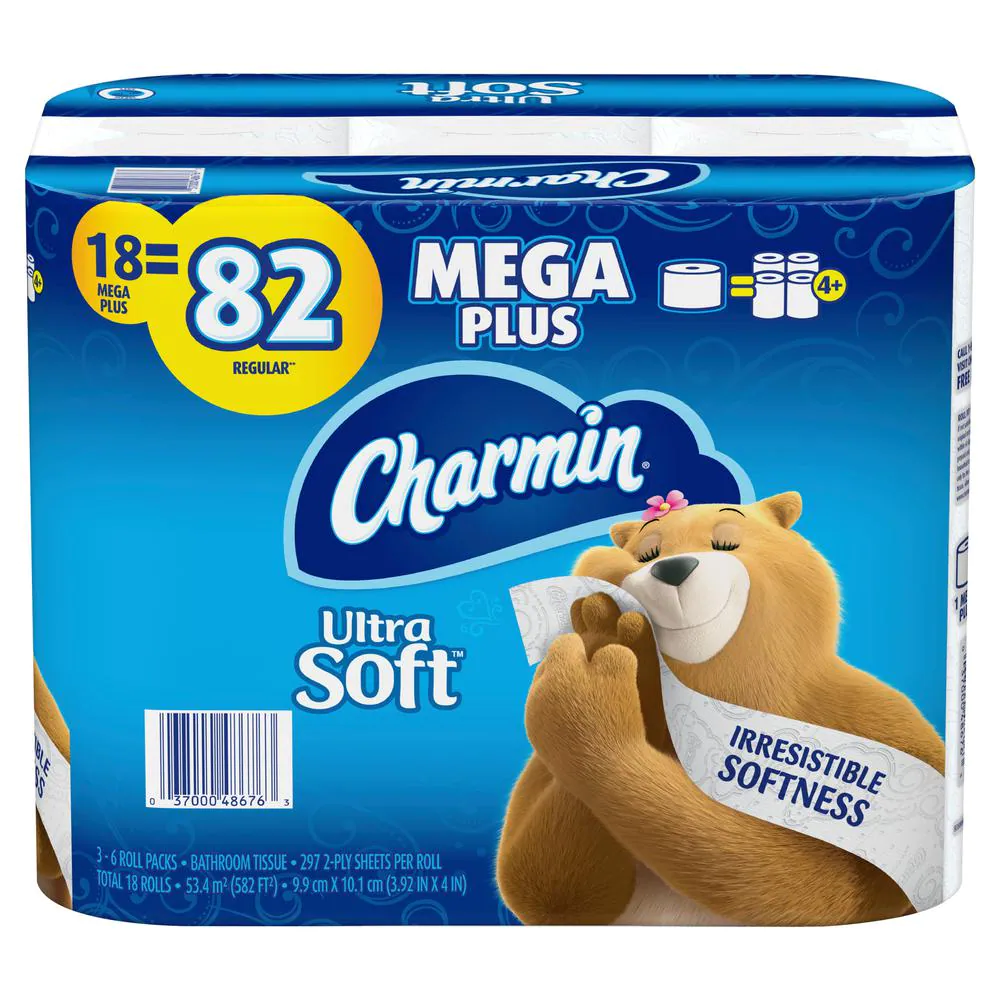 |
| Photo: The Home Depot |
The best toilet paper available is Charmin Ultra Soft. Charmin's double-ply roll combines unmatched comfort with dependable durability. Despite the fact that Charmin's Ultra Strong roll is more robust, prolonged use revealed that the Ultra Soft roll's supreme comfort is more crucial.
Thankfully, Charmin Ultra Soft didn't tear while being used, even though it wasn't exactly durable. Just under a minute was needed for it to dissolve in water, so it will disintegrate in the toilet (important for preventing potential septic problems) but not while you're working on something else.
The best toilet paper to use every day is Charmin Ultra Soft because of its exceptional durability and pure comfort.
Procter & Gamble is an American company that makes toilet paper under the Charmin brand.
2. Angel Soft
While many people find it impossible to imagine life without toilet paper, it has many other uses as well, including cleaning up spills, removing makeup, caring for the nose, and performing some minor bathroom cleaning tasks. Angel Soft is one of the businesses that makes the claim to make and sell high-quality toilet paper.
In 1987, Angel Soft toilet paper made its debut. Only pulp fiber and no other ingredients are used in the production of Angel Soft toilet paper. They only make two-ply toilet paper, and each sheet has two layers of strength and softness. They also claim that their toilet paper is septic safe, meaning that it dissolves easily and is safe for both septic systems and conventional sewers. Also available in various scents is their toilet paper.
There are 12 double rolls of lavender-scented tube, 48 family rolls, and 9 mega rolls of lavender-scented tube among Angel Soft's products. Additionally, the business carries goods from brands like Vanity Fair, Quilted Northern, Aria, Dixie, and so forth.
1. Private Label
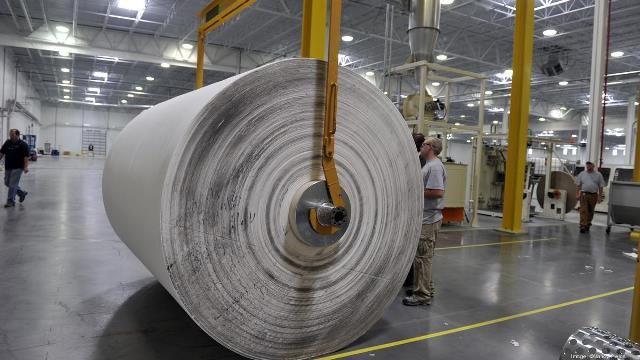 |
| Private Label |
With a full selection of quality tiers in bath and facial tissue, paper towels, and napkins, Clearwater Paper Corp. is a top producer of private label tissue products for the American market.
Clearwater Paper has a distinguished history of 50 years in private label, and it has built enduring relationships with retailers who have created best-in-class tissue programs. Since the mid-1990s, the company has invested a significant amount of capital to increase the range of tissue products it offers, adding premium and ultra-premium national brand equivalent (NBE) items for all market segments. With the introduction of upgraded ultra-premium bath tissue made with through-air-dried (TAD) technology in 2013, the investment will continue. Three TAD tissue machines owned by Clearwater Paper are located throughout North America and produce the best bath and paper towels for both national and local customers.
To support retail private label and specialty tissue products for a variety of customers, the company currently runs 12 tissue facilities across the United States and one in Canada. Customers with commercial and industrial business needs can purchase a line of away-from-home products from Clearwater Paper.
Clearwater Paper was the first dedicated provider of private label tissue to offer on-package fiber certification bearing the Forest Stewardship Council (FSC) label in an effort to enhance the value and innovation of customer brands in North America. FSC is regarded as the industry benchmark for goods made with wood fiber from sustainably managed forests and other ethical sources.
How is it that toilet paper is created?
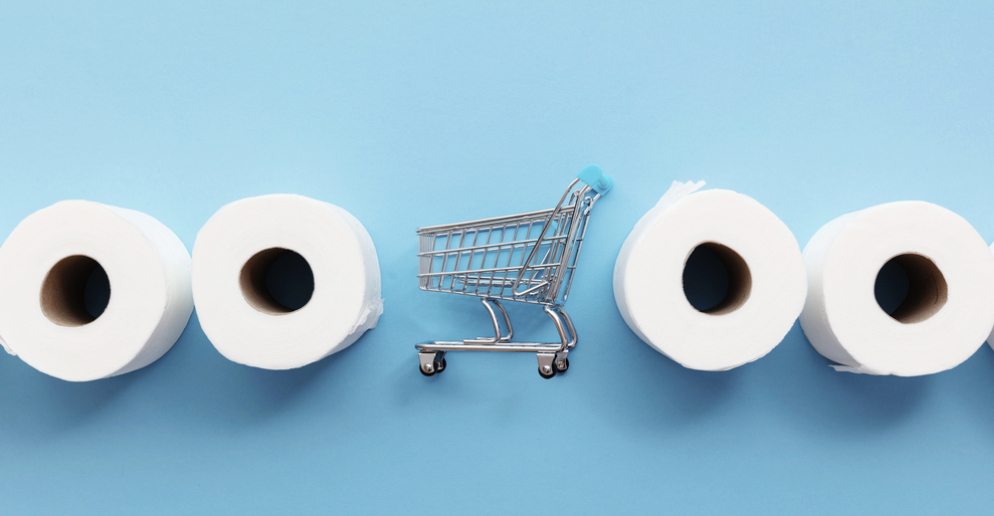 |
| Photo: Global Trade Magazine |
Typically, both softwood and hardwood trees are used in the production of "virgin" paper, the kind used to make toilet paper. Long, intertwining fibers found in softwood trees like Southern pines and Douglas firs are what give paper its durability. Paper made from hardwood trees like gum, maple, and oak is softer because the fibers are shorter. Hardwood accounts for about 70% of the total, while softwood makes up the remaining 30% of most brands of toilet paper.
Bleaches, chemicals used to process the trees into usable fiber, and water round out the list of raw materials. Paper mills that use recycled materials bleach their product with oxygen, ozone, sodium hydroxide, or peroxide. However, chlorine-based bleaches (chlorine dioxide) are commonly used by virgin-paper manufacturers, and these chemicals pose a threat to the environment.
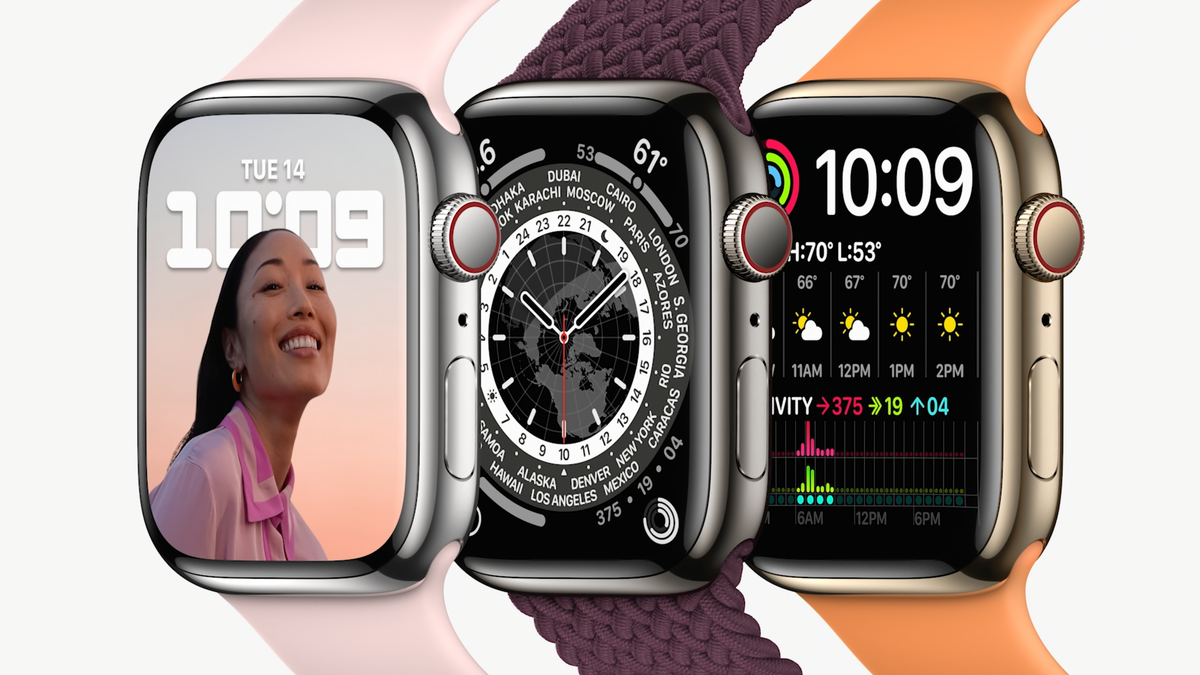 How to Screenshot on Apple Watch and Where to Find How to Screenshot on Apple Watch and Where to Find Taking a screenshot is a quick and easy way to capture your watch display, and this process is also a piece of cake for the ... |
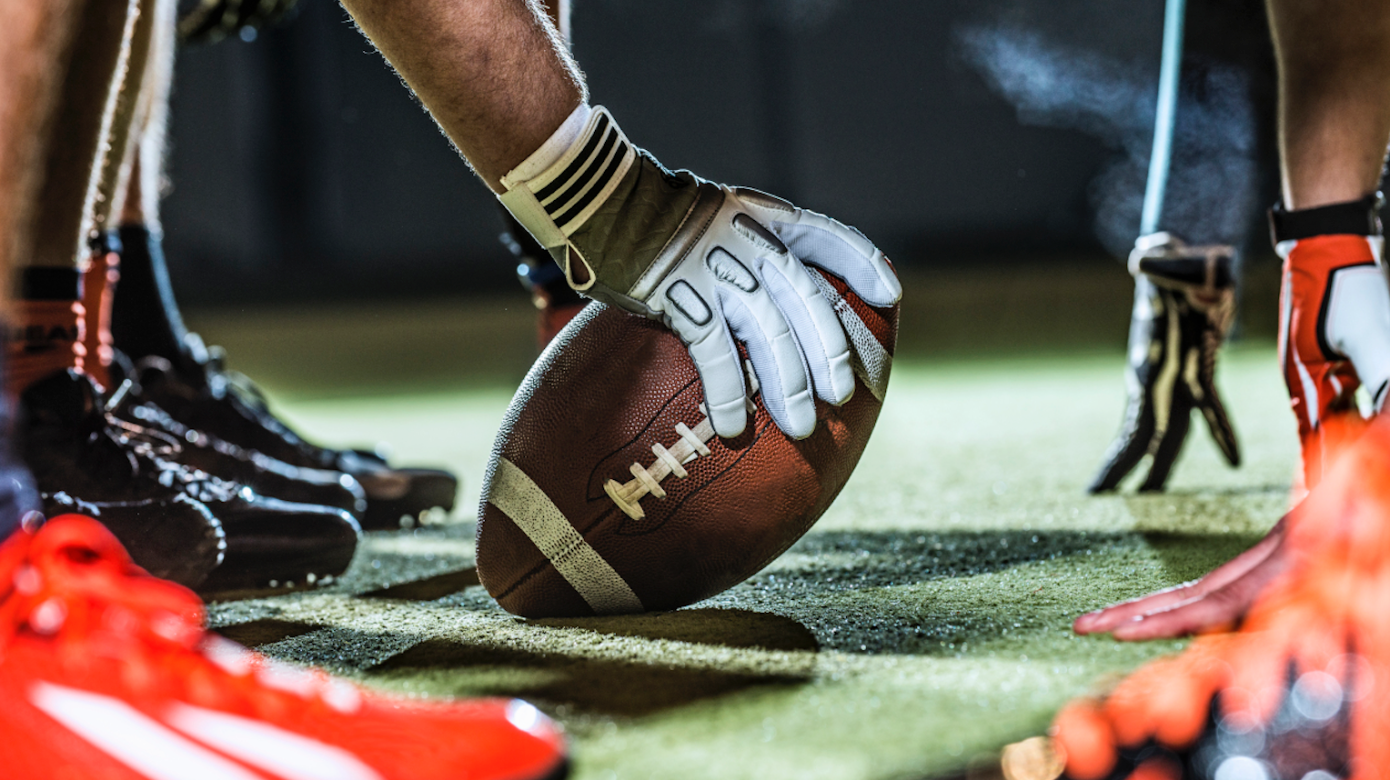 How To Watch NFL, Live Stream From Anywhere In The US, UK, Canada How To Watch NFL, Live Stream From Anywhere In The US, UK, Canada We guide for how to watch every NFL game, live streams, online anywhere around the world, in the US, UK, Canada for Free, without cable. |
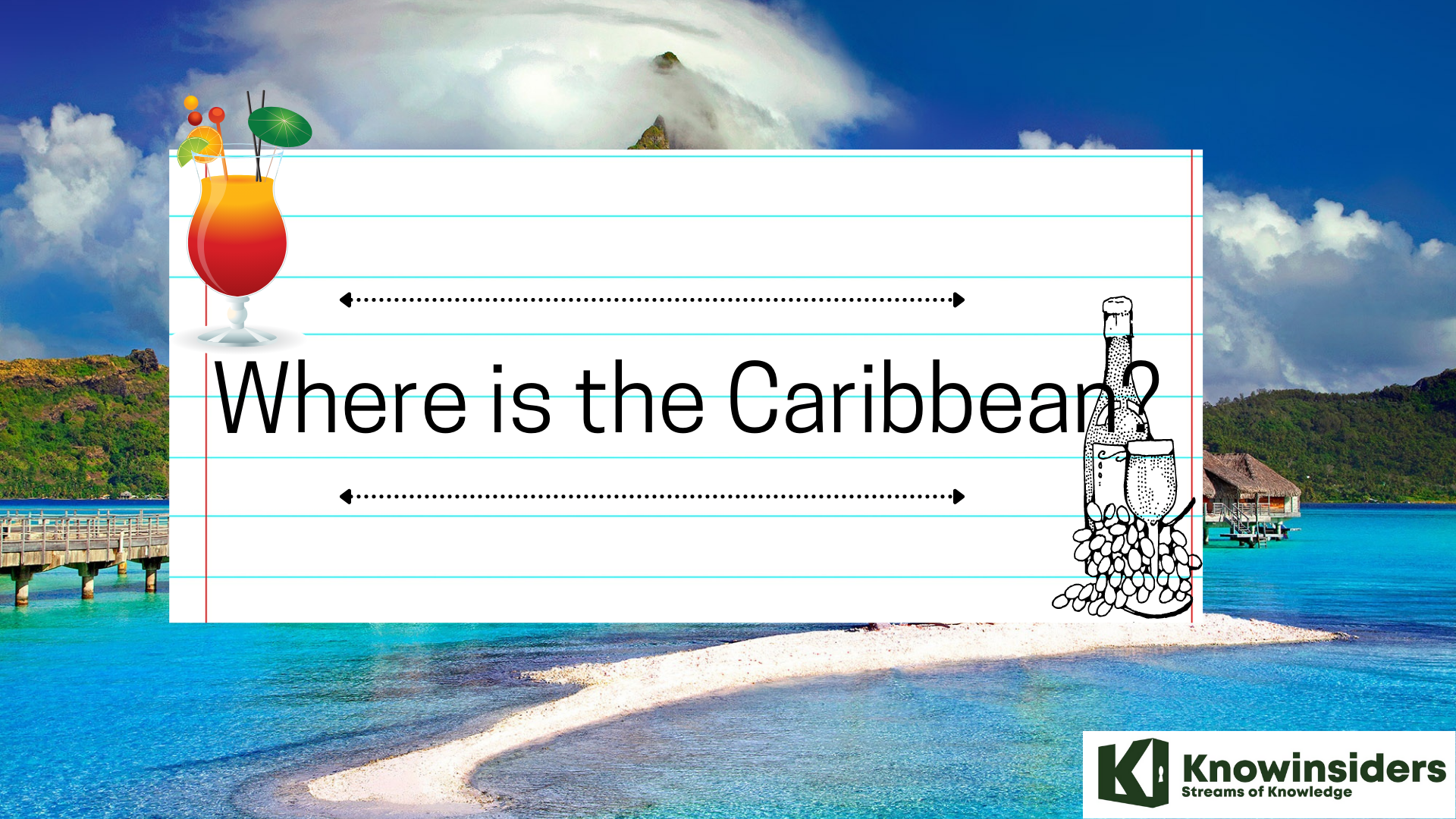 Where Is The Caribbean? Where Is The Caribbean? To have an answer to your question "Where is the Caribbean?", keep reading the article below. |
 Where Are Screenshots Saved and How to Find Screenshots on PC Where Are Screenshots Saved and How to Find Screenshots on PC There are times that we need to take screenshots on PC for working purposes or simply just for saving the moment but don't know where ... |

